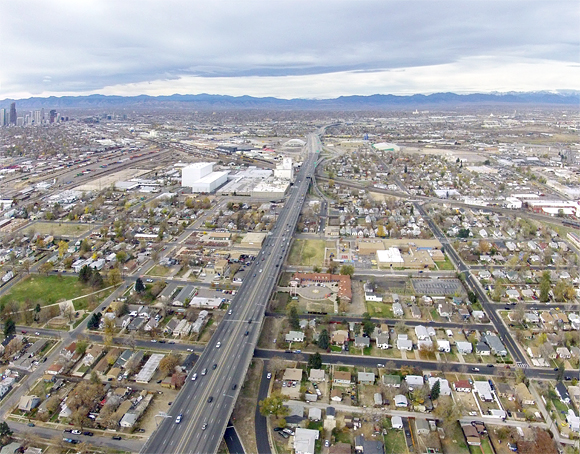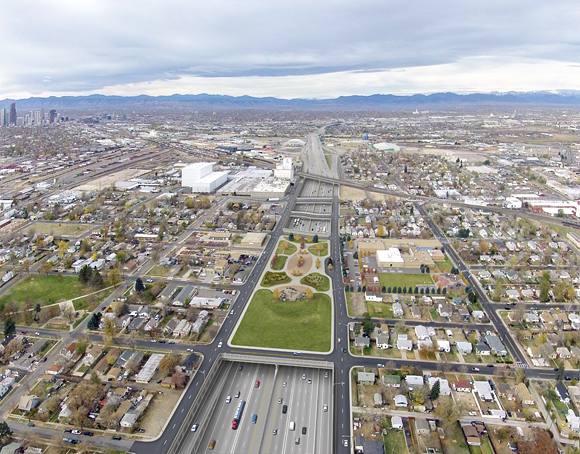
Denver has one of those golden opportunities that many American cities are seizing: An elevated highway that damaged neighborhoods is nearing the end of its life, giving the city an opening to repair the harm.
Unfortunately, as Tanya has reported, Denver seems poised to double down on highway building instead. The city is looking to bury and widen Interstate 70 through the Elyria-Swansea neighborhood, then cap a small section. The $1.8 billion proposal would add four lanes to I-70 -- two in each direction -- for a total of 10 lanes.

While Denver has been booming in general, the neighborhoods bisected by I-70, which was laid down through the city in the 1950s, haven't shared in the good fortune. Thanks to the many trucks roaring through and the eyesore of the elevated highway, Elyria-Swansea and nearby communities suffer from excessive traffic, environmental problems, and disinvestment.
Proponents of the highway plan call it a "corridor of opportunity" and are promising a network of parks, open space, and transit. A big sweetener is the proposed 800-foot-long park they say would be built on the highway lid.
But according to community activist and former City Council member Susan Barnes-Gelt, the design does little to mend connections between the two neighborhoods. She says there's no excuse for widening highways through urban neighborhoods in an age when many cities are choosing to tear them down.
In a Denver Post editorial earlier this year, Barnes-Gelt wrote that under Mayor Michael Hancock, what could have been a big step forward for the city is "morphing back into a highway project." It's especially disappointing considering Denver's recent history of smart planning, she said.
"This is what happens when people that can make a difference don’t pay attention," she told Streetsblog.
Barnes-Gelt said she would rather see the highway converted into an urban boulevard.
"You do not build or expand interstate freeways either in cities or near cities," she said. "You do not sacrifice the city and county of Denver, the state’s capital. We're one of the most financially emerging western places in the country."
Part of the problem is that the plans were hatched about 10 years ago, she said, which might as well have been a century ago in terms of thinking about urban transportation.
"The good old boys started the classic DOT process of creating the steering committee and putting ideas out there," she said. "The steering committee didn’t include any visionary people. It was the good old boys. It was the truckers."
There has been a leadership vacuum around the project since then, Barnes-Gelt said, especially from prominent elected leaders. One notable exception is Denver Auditor Dennis Gallagher, who came out against the project a few months ago.
"It makes no sense to me and is not good public policy to build a 10-lane freeway when it likely will never be needed, may in point of fact be obsolete sooner than later, is destructive to neighborhoods, and a wasteful expenditure of taxpayer dollars," Gallagher said in a letter to Colorado DOT this April.
Meanwhile, a group of architects in the city, including Peter Park, the former planning director, put forward a plan to instead reroute I-70 around the neighborhoods along I-270. But state DOT officials have said that would cost twice as much because it would require adding lanes to I-70 and I-270.
Barnes-Gelt says it looks like institutional inertia is going to prevail, unless an environmental lawsuit puts this project back in purgatory for another decade, which she thinks is possible.
"This project has been going on for so long, people are exhausted," she said. "The world has changed, and the institutions... they’re still partying like it’s the 1970s."





